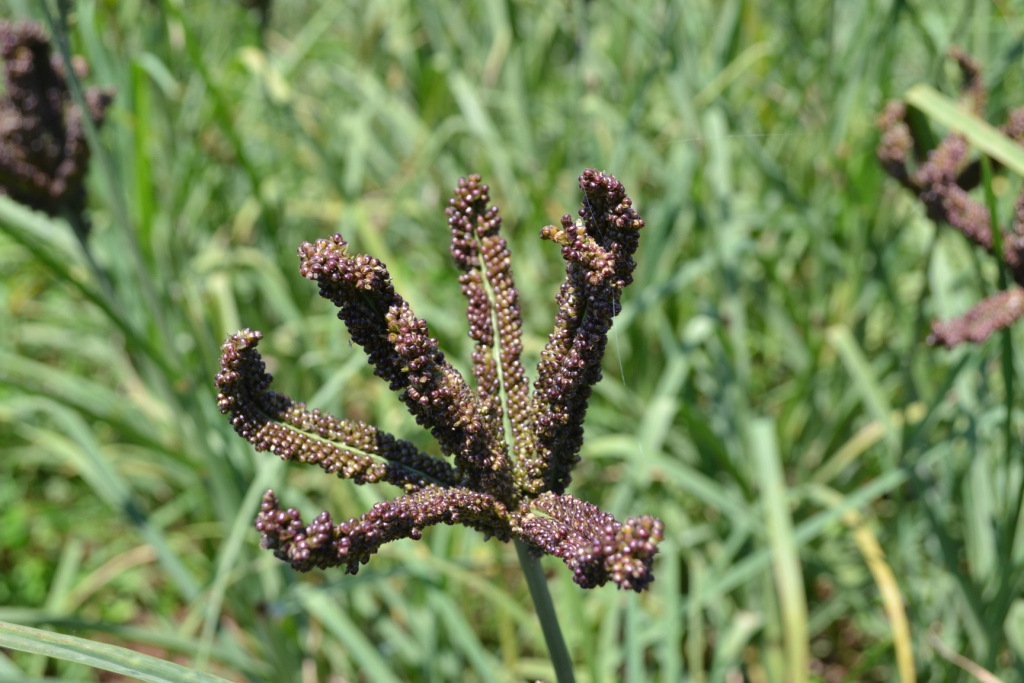 Commercial production of finger millet in Uganda is being halted by farmers’ lack of precise drying mechanism which leaves millers with the added responsibility of drying the millet themselves.
Commercial production of finger millet in Uganda is being halted by farmers’ lack of precise drying mechanism which leaves millers with the added responsibility of drying the millet themselves.
This in turn has discouraged numerous investors who have expressed interest in adding value to a crop that has become one of the leading cash cows in the West African countries and which has potential to blossom in Uganda.
Maganjo Grain Millers though having invested in a de stoning machine argue that many smaller millers cannot afford the latest technology which is seeing farmers left with produce and no markets. Worse still is the allegation by millers that some farmers and middle men are adding stones to the millet to increase the kilos. For Mary Tamale the Managing Director of Kampala-based Maganjo Grain Millers has been among the driving forces behind a finger millet promotion effort that aims to link smallscale producers to a flourishing demand for millet products among urban consumers in East Africa.
She is currently working to source the grain from producer groups, and is trying hard to persuade some of Uganda's agricultural investors that smallscale millet growers deserve some financial backing.
For Family Diet, another of Kampala's large millers, sourcing grain from farmer groups has already begun. Three hundred farmers, members of the Katweyombeke Cooperative Society in Kibale district, western Uganda, are supplying millet at a stable, agreed price. Their grain, threshed and dried on smooth rocks, is prized for its cleanliness, and is processed by Family Diet to be sold as pure flour or blended with soya or cassava flour.
Despite having a stigma as poor man's food, millet is increasingly being recognised for its nutritional qualities, being higher in calcium and protein than most other grains, including wheat and rice. As Issa Wamala, managing director of Family Diet explains, having a steady supply of a clean product from the farmers is essential if his company is to meet the demand from supermarkets and other buyers. The success of his arrangement with the Kibale co-operative has made him keen to expand the number of supplying farmers to a thousand or more.
Establishing links in the finger millet industry between farmers and processors has been one part of a wider effort to boost production of the crop in the region. The work, funded through DFID's Crop Protection Programme, began by studying constraints to production. A survey in Kenya identified blast disease to be a major problem, causing yield losses of 10-50 per cent. Work followed to study the pathogen and routes of infection, in particular through seed and weeds. The next step was the identification of blast resistance in over 80 millet accessions, drawn from the gene bank of ICRISAT (the International Crops Research Institute for the Semi-Arid Tropics) and from farmers' fields.
These were narrowed down to the eight most promising varieties, which were tested in farmers' fields under different management systems through 'mother and baby' trials. At a field day at the end of the trial, four of these were picked out as the clear winners, both by farmers' votes and researchers' results. These are to be tested further, but are already being grown and spread by the participating farmers.
Other lessons that emerged from the trials included the benefits of row planting. Millet is normally broadcast, but this makes weeding extremely laborious, especially as many weed species are very similar in appearance to young millet plants. Row planting removes much of the doubt about what is a weed and what is not, and dramatically speeds up the process both of weeding and harvesting. The issue of how to scale up and distribute the better varieties is, however, a challenging one.
Very few millet farmers buy seed, instead usually saving it from their own crop. Community-based seed multiplication, already under trial for potato and groundnut in Uganda, may provide a solution, but implementing such a system will depend on finding a willing partner, such as an NGO or extension office.
In Uganda, the government believes finger millet could be a valuable source of food and income for the thousands who have been displaced by the country's internal conflicts. But, stresses Mary Tamale, if smallscale farmers are to profit from commercial production, they need to get organised. Expanding their production and improving their drying systems will require investment, and there is also a need for grain stores, so that large quantities of grain can be easily supplied to processors.
At a millet showcase event in Kampala earlier this year, several potential investors, including the Uganda Investment Authority and the Standard Chartered Bank, seemed enthusiastic. It remains to be seen whether this enthusiasm turns into genuine funding offers.
But the future of the crop will also depend on continuing growth in demand. To this end, another workshop is being organised for July this year, targeting potential consumers: local chiefs, head teachers, staff from nutrition clinics, managers of children's nurseries and university caterers are all invited. And, says Mary, they can be sure of getting tasty millet products - biscuits, cakes and porridge - throughout the day.